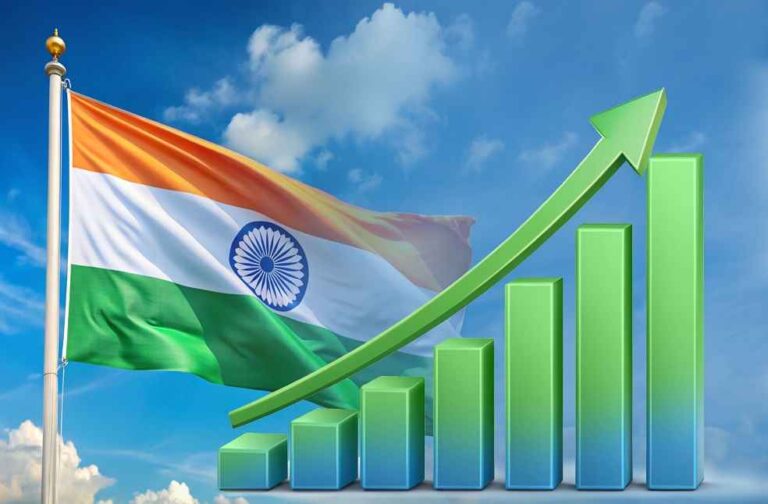India is positioning itself as a significant beneficiary of China-US trade conflicts, leveraging global shifts in supply chains and geopolitical dynamics to redefine its role in international trade. According to a recent report, India is projected to achieve a compound annual growth rate (CAGR) of 6.4 per cent in trade over the next decade, aligning closely with its robust GDP growth.
The ongoing trade tensions between China and the United States have prompted many global businesses to seek diversified and resilient supply chains. This shift has positioned India as a preferred alternative production hub. The nation’s ‘China+1’ strategy, combined with its vast domestic market, skilled workforce, and forward-looking policies, further strengthens its appeal as a manufacturing base.
Key Drivers of India’s Growth
India’s ascent in global trade is underpinned by several factors, including:
- Diversified Supply Chains: Many companies are reducing dependence on China and relocating production to countries like India. This trend is driven by geopolitical tensions and the imposition of tariffs by the US on foreign imports.
- Government Incentives: Generous policies supporting manufacturing industries and investments in infrastructure are enabling India to attract global players.
- Cost Advantage: India offers a large pool of low-cost labour, making it a competitive choice for global manufacturing.
- Strengthened Partnerships: Collaborations with the US, the European Union, and emerging markets in Africa and ASEAN regions are expected to bolster India’s trade momentum.
Transforming Global Trade Dynamics

The report highlights that global trade is set to exceed $29 trillion by 2033, with the Global South, accounting for 30 per cent of this trade, witnessing substantial shifts. India’s integration into the global economy positions it to gain a more significant share of this evolving landscape.
As North America reduces reliance on China and China deepens its trade ties with the Global South, trade routes are being reshaped. For India, this realignment provides a strategic advantage to capitalise on its growing relevance in global supply chains.
Sectoral Impacts and Opportunities
India is expected to benefit across several industries, including automotive, consumer electronics, and fashion. With higher tariffs on Chinese imports affecting costs in the US, many businesses are exploring India as an alternative source for these products. For instance, the report estimates a potential $61 billion increase in costs for importing consumer electronics from China to the US under a 60 per cent tariff, creating opportunities for India to fill the gap.

India’s proactive strategies and favourable geopolitical positioning have set the stage for it to emerge as a clear beneficiary of China-US trade conflicts. By focusing on strengthening global partnerships, enhancing domestic infrastructure, and leveraging its competitive advantages, India is poised to play a pivotal role in shaping the future of global trade. As the Global South continues to rise, India’s position as a leading trade and manufacturing hub is set to gain further momentum.
EDITOR’S CHOICE | Global Fashion Industry: Trends, Challenges, and Policies



